Clothes are integral part of PPE which provide protection against hazards in work
area. While working in hazardous area depending on the specific hazard present in
the work area clothing type is to be decided. There are some common hazardous
conditions and the recommended clothing materials to address the same.
Flame-Resistant (FR) Clothing: When working in areas where risk of flame and
thermal exposure is present,such as in the oil and gas industry or electrical utilities,
flame-resistant clothing is to be used. Flame-Resistant (FR) clothing is made from
materials that are inherently nonflammable fabric. Common Flame resistant
materials include Nomex, Kevlar, modacrylic, and flame-resistant treated cotton. These materials do not catch fire easily, and if they do catch fire, they self-
extinguish.
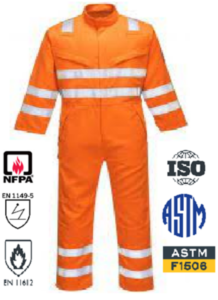
Chemical-Resistant Clothing: When dealing with hazardous chemicals, select
appropriate chemical-resistant clothing made from materials such as neoprene,
PVC, rubber, or specialized chemical-resistant fabrics. Ensure that the clothing
provides protection against the specific chemical we are dealing with. Clothing may
not provide 100% protection against chemicals, the selection of appropriate
protective clothing and safety practices can reduce risks.
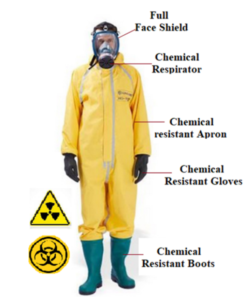
Electrical Hazard Protection: In environments with electrical hazards, wear non-
conductive clothing made from materials like rubber or PVC. It prevents direct contact with electrical current under normal operating conditions.. Additionally,
avoid metallic components like zippers, buttons on clothing, avoid work in wet
areas, install warning signs etc.
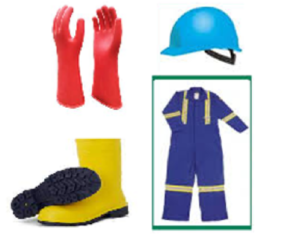
Static Control Clothing: In areas where static electricity can be dangerous (e.g., Retail outlet area, near flammable materials or explosive atmospheres), wear anti- static or conductive clothing materials to help prevent static charges. Fabrics with carbon fibers or conductive threads can be used.
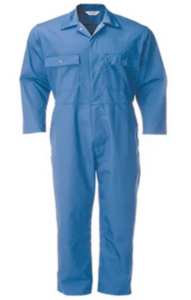
Radiation Protection Clothing: In situations where there is exposure to ionizing
radiation (e.g., in nuclear facilities or medical radiology), wear specialized radiation
protection clothing made from materials that contain heavy metals like lead.
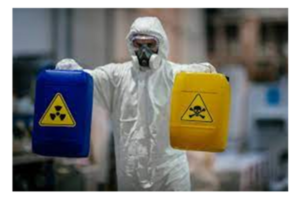
High-Visibility Clothing: In situations where visibility is essential, such as
construction sites or roadwork, use high-visibility clothing made of bright,
fluorescent colors (e.g., orange, yellow) and equipped with reflective materials to
enhance visibility, especially in low-light conditions.
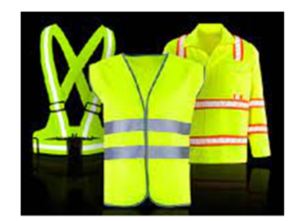
Heat-Resistant Clothing: For protection against extreme heat, choose heat – resistant clothing made from materials like aluminized fabrics or specialized high-
heat-resistant materials. This is important in foundries, metalworking, and other high-temperature environments.
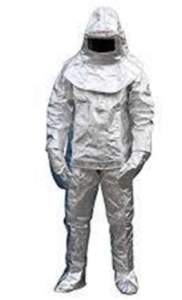
Conduct safe talk on hazard assessment in your specific work environment to
determine the appropriate clothing materials and PPEs needed to mitigate risks
effectively. Additionally, ensure that the clothing meets relevant safety standards
and is properly maintained and worn according to guidelines and regulations
based on the hazards present in workplace.
